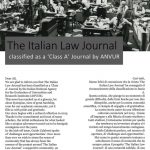
Untranslatability and Fidelity in Legal Translation
Fidelity in translation refers, basically, to the extent to which the translation of a document conforms to the source text. How faithful is it, not only to the actual words, but to the actual message? This is the meaning of being faithful to the author. Of course, meanings change, especially in law, and a word, even in widely spoken European languages, can’t always be translated into the exact equivalent in the target text. This is the meaning of “untranslatability”; that is, the property of text for which no equivalent exists.
UNTRANSLATABILITY IN LAW: ITALIAN MEDICO-LEGAL TRANSLATION As the Italian adage goes, “traduttore, traditore“: literally, “translator, traitor.” And, as the Hungarian slant on this saying goes “a fordítás: ferdítés”, which roughly means “translation is distortion”. When this problem of untranslatability is then applied to the law, the situation is further complicated. The task that seems so straightforward at first, the translation of one legal term into another language, raises problems of fidelity, ambiguity, and interpretation- due to the fact that legal systems are so different, and the term in Italian does not necessarily mean that it will have an equivalent in English or, indeed, in another language.
A significant way that untranslatability manifests in this way is in medical translation. Italian law considers health in a manner quite distinct from the English approach: it considers health comprehensively, so that injury to the body also takes into account the psychological consequences (danno psicofisico) which result from the injury. This consideration of bodily and mental injury and health in conjunction is considered to be a subjective right (diritto soggettivo) which is actually protected by the Italian Constitution (specifically Articles 2 and 32)
Article 2:
La Repubblica riconosce e garantisce i diritti inviolabili dell’uomo, sia come singolo, sia nelle formazioni sociali ove si svolge la sua personalita`/The Republic recognises and guarantees the inviolable rights of the person, both as an individual and in the social groups where human personality is expressed.
Article 32:
La Repubblica tutela la salute come fondamentale diritto dell’individuo e interesse della collettivita`, e garantisce cure gratuite agli indigent/ The Republic safeguards health as a fundamental right of the individual and as a collective interest, and guarantees free medical care to the indigent.
Due to the recognition of this right, and the long debate that took place between judges and Italian academic lawyers in the 1970s, case law developed the concept of damage to the person. The resulting title is danno alla salute, or danno biologico. This heading is practically untranslatable, but, essentially, it refers to any damage to a claimant’s psycho-physical health which is actionable. This is a different, extra heading of damages in addition to danno patrimoniale (Future (pecuniary) loss) and danno morale (pain and suffering) Danno alla salute, and danno biologico, are collectively referred to as danno non-patrimoniale.
Danno patrimoniale is the closest that Italian law comes to the common-law notion of pecuniary loss. However, this example shows how, even where an English equivalent can be found, the way that the law has developed and is structured means that some concepts and terms have no real equivalent. This is the problem not only of translation, but also of comparative law.
A REDEFINITION OF LEGAL TRANSLATION?
Theorists have studied this problem in detail. Kasirer (2000: 66-67) asserts that debate itself, that translators must stick to the very letter of the text or try to translate its spirit is itself unhelpful, since both options consign the translator to the role of a passive mediator: “the notion that a legal text has a spirit tends to be understood as a signal that it has a single, fixed meaning fixed by the author, over which meaning the interpreter or translator has no control.” Rather, modern legal translators consider fidelity to the source text as the achievement of an equivalent impact on the reader, even if changes have to be made to the original text in order to respect the legal culture of the target text. This is the production of linguistic equivalence, in which the translator becomes a “text producer” rather than a “bilingual typist” (Hammond 1995: 238-9).
In this way, should legal translation be redefined? Sarcevic (1997: 71) certainly thinks so, proposing that the success of a translation ought to be measured in terms of not the direct equivalence between the source and target texts, but rather in terms of equivalent legal effects.
Nonetheless, linguistic fidelity remains a requirement of legal translators. As the United Nations Instructions for translators stipulate, “fidelity to the original text must be the first consideration” (Sarcevic 1997: 16). Translators in the United States have also been advised not to modify sentence length, so as to avoid providing their own interpretation of a document which they are merely translating (Beyer & Conradsen 1995: 164). This view of text fidelity is extremely literal, and is perhaps an extension of the positivist legal tradition, which considers that the meaning of a legal text is “declared” rather than being created, or even construed, by its interpreter. In any case, as lawyers are themselves acutely aware of the power of language, they are understandably reluctant to risk translators choosing the words. In translation, however, making this choice in words is unavoidable
SOURCES
Beyer, V. & K. Conradsen (1995): “Translating Japanese Legal documents into English: A Short Course,” in M. Morris (1995), pp. 145-177.
Hammond, M. (1995): “A New Wind of Quality from Europe: Implications of the Court Case Cited by Holz-Mänttäri for the U.S. Translation Industry,” in M. Morris (1995), pp. 233-245.
Kasirer, N. (2000): “François Gény’s libre recherche scientifique as a Guide for Legal Translation,”
Sarcevic, S. (1997): New Approach to Legal Translation, The Hague/London/Boston, Kluwer Law International.






Leave a Reply
You must be logged in to post a comment.